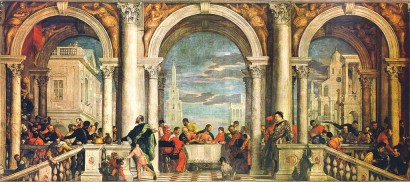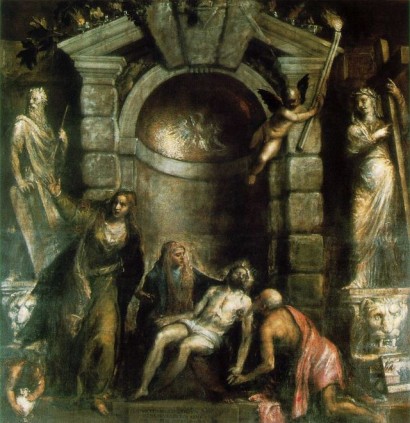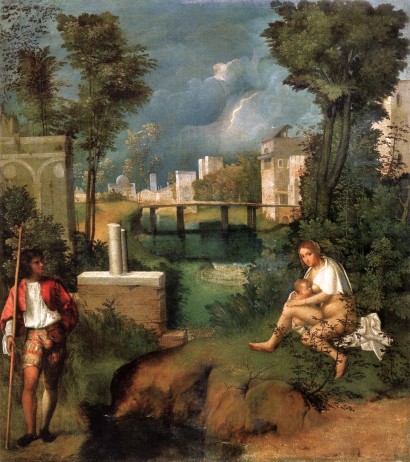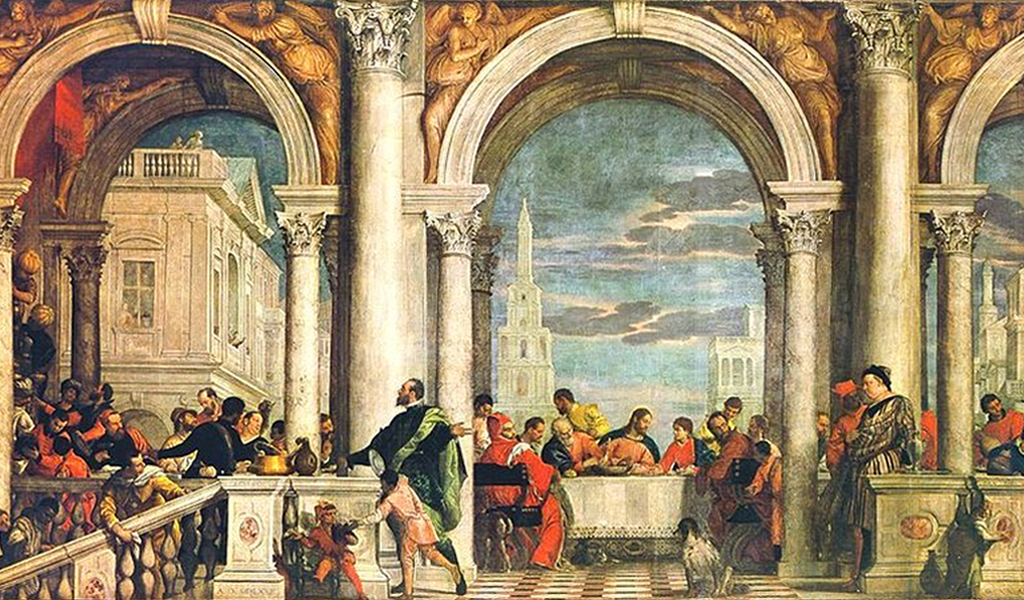Almost all exhibitions in Venice are now showing art of current times – so one day I have decided to step out of contemporary art and step into Gallerie dell’ Accademia for some old-age beauty. Originally a gallery of an art academy, Gallerie dell’ Accademia is now a museum that houses pre-19th century Venetian art.
Here are some of my picks:
 Paolo Veronese
Paolo Veronese
The Feast in the House of Levi, 1573
Oil on Canvas
555 x 1280cm
Photo Courtesy: Web Gallery of Art
This painting by the Italian painter Paolo Veronese is one of the largest canvases of the 16th century, and has caused quite a stir. It was painted by Veronesse for the Basilica de Santi Giovanni e Paolo, as a Last Supper, to replace a work by Titan which was destroyed in a fire. However this work led to an investigation by the Roman Catholic Inquisition. The artist was accused of heresy because it did not show enough respect for the sacred object as the painting shows “buffoons, drunken Germans, dwarfs and other scurrilities.” Also it is more about the display of Venetian grandeur than a pious piece of religious art. He was being given three months to change the painting, but instead he simply reworded the title to The Feast in the House of Levi, which alludes to the Gospel of Mark chapter 2 verse 15: “And it came to pass, that, as Jesus sat at meat in his house, many publicans and sinners sat also together with Jesus and his disciples: for there were many, and they followed him.” That was enough to do the trick – this episode specifically mentioned the presence of “sinners”. After this, nothing more was said.
 Titian
Titian
Pietà, 1575-6
Oil on canvas
389 x 351 cm
Photo Courtesy: Web Gallery of Art
This piece by Titian was intended for his own tomb, but he died before he managed to finish it. It was eventually completed by Palma the Younger. Venice was being struck by a plague when Titian did this painting. It was done as an ex-voto offering, a prayer for him and his son. He even made sure he was being painted into it, twice. The bearded old man who holds the head of the dead Jesus is a self-portrait of him. There is also a painting within the painting, which was the second time Titian himself appears in the painting. In the bottom right hand corner, is a stone tablet on which the artist depicted him and his son, both on their knees, praying to the Virgin for delivery from the plague. Unfortunately his prayer remained unanswered – both Titan and his son died in the plague. Titian is known for his use of colour and manipulation of light, but in this painting everything is plunged into darkness and is shrouded in gloominess. This shows his fear of death in the bleakness of the plague. Despite being a believer, the idea of death remained dreadful to him when it was his time to go gently into that good night.
 Giorgione
Giorgione
The Tempest, 1508
Oil on canvas
83 x 73 cm
Photo Courtesy: Web Gallery of Art
Giorgione is regarded as the most mysterious Renaissance painter, because only 6 works can be attributed to him undoubtedly, and in some of them, there is no concrete motif or meaning. The painting The Tempest fits into both scenarios. Considered as the first landscape in western painting, it is infused with symbols that cannot be deciphered. On the right hand side of the canvas we have a breast-feeding lady, who is being identified as a prostitute or a gypsy. The weird thing is the baby is suckling at the side of the woman, instead of being in her lap. Opposite to her is a man, whom art historians speculate is either a shepherd, a soldier, a gypsy, or a member of a club of unmarried man. He is looking towards the direction of the woman but not at the woman. At the background we can see buildings of a deserted city under blue lightning bolts. Beneath the man, ruins with broken columns are observed, which usually symbolizes death. One may also notice the stork on the rooftop on the right, which sometimes is a representation of parental love. No one can say for sure what this painting is about – some think it depicts the flight into Egypt, while some think it is a scene from classical mythology.




